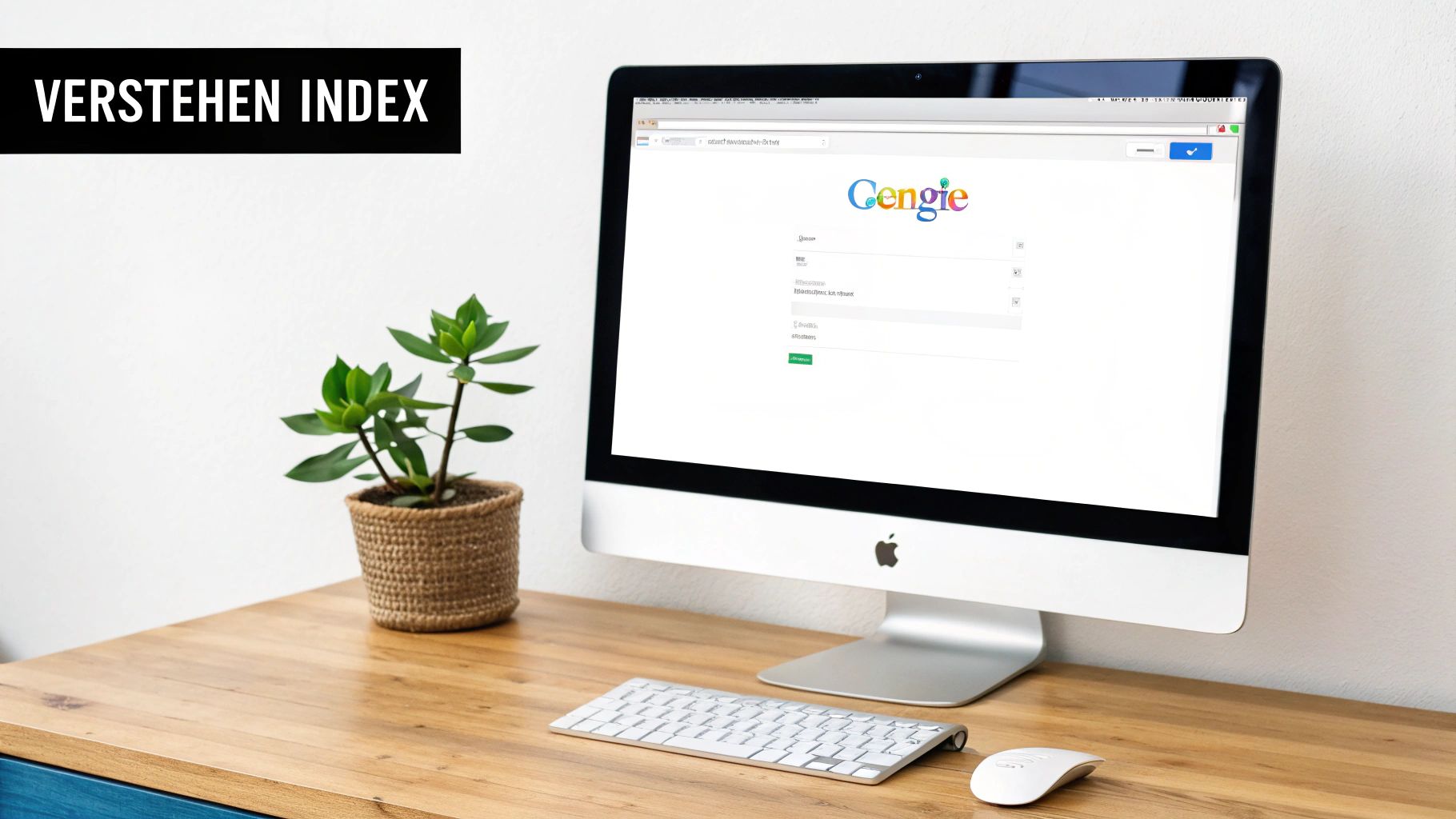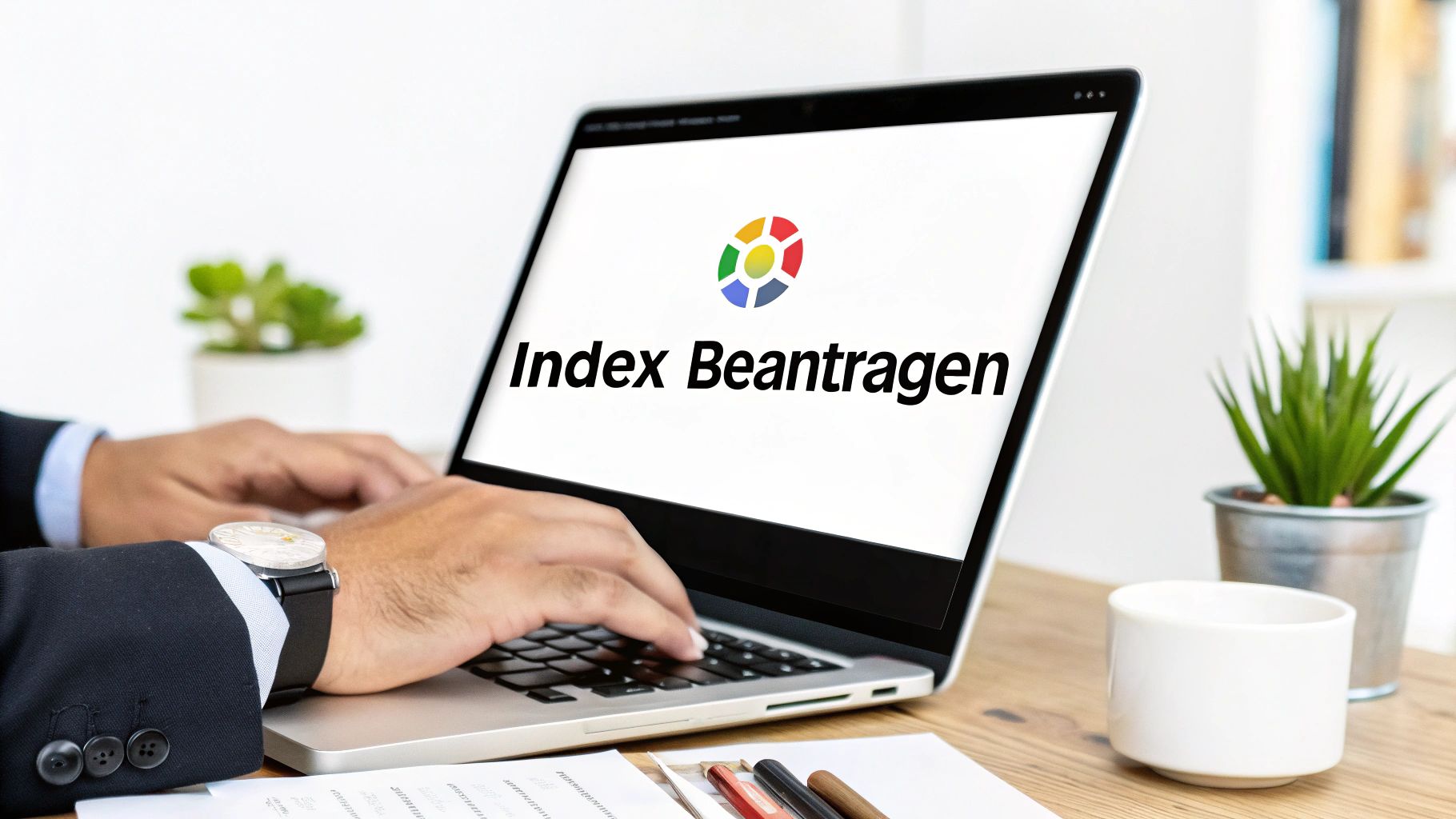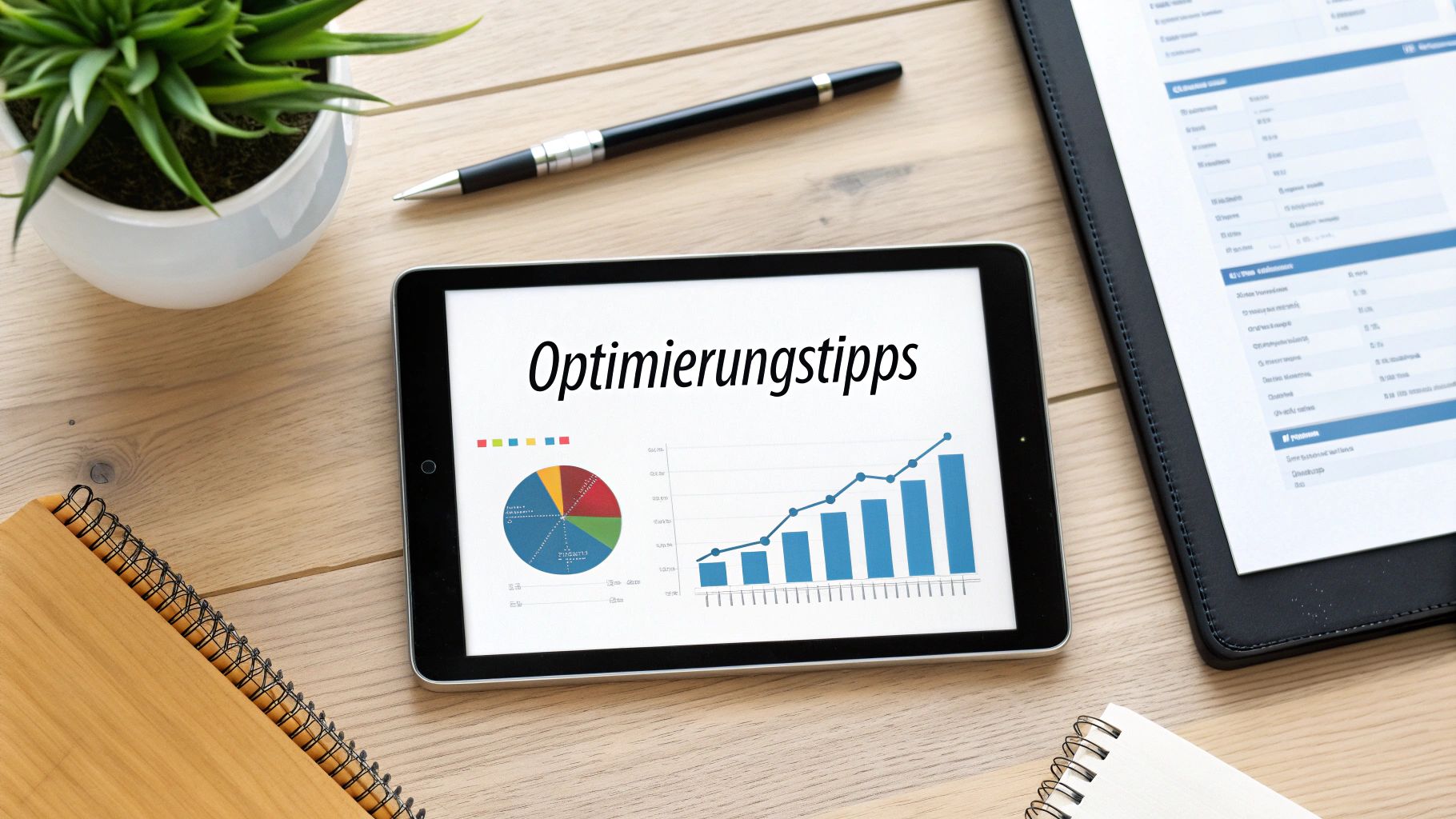Understanding the power of Google indexing

The success of your website depends heavily on its visibility in search engines. Google indexing forms the basis for appearing in search results at all. It's comparable to an entry in a huge library catalog: only those listed there can be found by readers.
This section explains the meaning and functionality of indexing.
Search engines are the main source of website traffic. They generate about 68% of all website traffic, with Google itself accounting for around 63,41% In Germany, over 80% of Internet users between 18 and 64 years of age regularly use search engines.
These figures highlight the importance of successful indexing and placement in search results. More detailed statistics can be found here: SEO statisticsA non-indexed page is like a shop on a remote side street with no signage—potential customers can't find it.
Why is indexing so important?
Indexing by Google allows your website to appear in organic search results. Users searching for relevant keywords can then find your website. This leads to increased traffic, more brand awareness and finally to higher conversion rates.
However, delayed or even missing indexing can severely impact your online presence.
How Google decides which pages to index
Google uses complex algorithms to decide which pages to index. Factors such as relevance, Quality of the content, technical aspects and mobile optimization play a crucial role in this.
You can imagine Google like a librarian who selects the most valuable and relevant books for his catalog.
Faster indexing, faster visibility
Optimize your website for Google indexing and gain a decisive advantage over your competitors. For example, when content updates are made, pages that are indexed faster will also appear faster in search results.
This means you'll benefit from your optimizations faster and reach your target audience sooner. For more information, see: How to master your sitemap. Google indexing is therefore an essential component of any successful SEO strategy and contributes significantly to online success.
Mastering Search Console: Your gateway to indexing

The Google Search Console is the most important tool to Indexing You can request and manage your website's search engine rankings through Google. It provides you with direct insight into how Google perceives and indexes your website. Consider Search Console your direct line of communication with Google.
Setting up the Search Console
The first step to successful indexing is to verify your website in the Search Console. Various options are available for this. Verification methods to select:
- HTML file upload: You upload an HTML file provided by Google to your web server.
- Meta tag: You insert a specific meta tag into the section of your website.
- DNS record (TXT record): You create a DNS TXT record with a verification code generated by Google.
- Google Analytics: You verify your website via your linked Google Analytics Account.
The method that works for you depends on your technical capabilities and access to your website.
Important functions of the Search Console
Once your website is verified, you'll have access to the diverse features of Search Console. Here are some of the most important:
- URL inspection: Here you can check the indexing status of individual URLs and Apply for indexing directly.
- Submit sitemap: With a sitemap, you inform Google about the structure of your website and make it easier to index all relevant pages.
- Performance reports: Analyze your website's performance in Google search results. Get data on clicks, impressions, and average ranking.
- Index coverage: This report helps you identify and resolve indexing issues.
Google indexing is essential for your online visibility. Since 2018, Google has shown verified website owners metrics from the Search Console, such as clicks, impressions, and average ranking, directly in search results. More about this here. Especially in Germany, with a Google market share of over 95%, optimal indexing is crucial for your online success.
Troubleshooting Search Console
Even with correct setup, indexing issues can occur. Search Console offers support here, too:
- Analyze error messages: The Search Console provides detailed error messages to help you troubleshoot problems.
- Check crawling statistics: You can see how often Googlebot visits your website and which pages were crawled.
- Detect temporary indexing blockages: If technical issues prevent Google from crawling and indexing your website, you can identify and resolve them in Search Console.
With Google Search Console, you have control over your indexing and can positively influence the visibility of your website in Google search results.
Indexing requests that Google doesn't ignore

You've set up your website in Google Search Console and are ready to submit indexing requests. Some requests seem to be processed immediately, while others disappear. Why is this? The key to success lies in understanding Google's priority mechanisms.
The different ways to index
Google offers several ways to request indexing of a URL. The most common methods are URL inspection, the Sitemap submission and the direct indexing request via the Search Console.
URL inspection is ideal for checking the current indexing status of individual URLs and requesting indexing if necessary. Sitemap submission is particularly useful for new websites or major updates. It gives Google an overview of the entire website structure. For individual, important pages, a direct indexing request may be useful.
Understanding Google's priorities
Google prioritizes pages based on factors such as relevance, Currentness and QualityA new page with high-quality content on a relevant topic will be indexed faster than an outdated page with less relevant content.
The meaning of status messages
After submitting an indexing request, you will receive Google Search Console a status message. These messages help you track the progress of indexing and take action if necessary.
To better understand the different status messages and take the right steps, you will find a helpful table here:
“Understand indexing status and act correctly”
This table decodes the various status messages for indexing requests and shows you exactly which measures will lead to success in each case.
| Status message | Actual meaning | Successful action steps |
|---|---|---|
| “URL is on Google” | The page is indexed and can be found in search results. | No further action required. |
| “URL is not on Google” | The page is not indexed. | Submit indexing request again, check possible sources of error. |
| “URL was found by Google, but not yet indexed” | Google knows the URL but hasn't indexed it yet. | Wait and repeat the indexing request if necessary. |
| “URL is crawled with low priority” | Google crawls the page less frequently. | Optimize content, build backlinks, improve page loading time. |
The table shows that different status messages require different actions. While no further steps are required for an indexed page, for non-indexed pages, error sources must be checked and the request repeated.
Prioritizing your requests
Strategic prioritization of indexing requests is especially important for large websites. Focus on the most important pages first, such as the homepage, product pages, or blog posts. This maximizes the chance of rapid indexing and increases your website's visibility in search results.
A successful indexing strategy is a continuous process with regular monitoring and optimization. With the right tools and strategies, you can ensure that Google doesn't ignore your queries. For more detailed advice on optimizing your indexing strategy, please contact the experts at LinkITUp.
Mobile optimization: The key to fast indexing

Mobile internet usage is constantly increasing. mobile optimization Your website is therefore essential for the Indexing by Google. Google is using the Mobile-First Indexing on prioritizing mobile content. This means Google primarily crawls and indexes the mobile version of your website.
Why Mobile First Indexing?
More and more users are accessing the internet via mobile devices such as smartphones and tablets. A positive mobile experience is therefore crucial to the success of your website. Google wants to provide its users with optimal search results and therefore favors websites that are optimized for mobile devices.
The most important factors of mobile optimization
Fast loading times are especially important for mobile users. Long waiting times lead to frustration and high bounce rates. Optimize your images, reduce HTTP requests, and use caching to Loading speed to improve.
In addition to the loading time, the responsive display Your website's design plays a crucial role. Content should automatically adapt to different screen sizes to ensure optimal readability and usability.
Touch elements are another important aspect. Buttons and links must be large enough and easy to operate with the finger. Sufficient spacing between individual elements prevents accidental clicks.
Best practices for mobile optimization and indexing
- Use PageSpeed Insights: Analyze the performance of your mobile website with PageSpeed InsightsThe tool offers concrete optimization suggestions.
- Implement responsive design: Make sure your website displays optimally on all devices.
- Optimize touch elements: Make your website touch-friendly for easy use.
Starting July 5, 2024, Google will only index mobile-friendly websites. Non-optimized pages will disappear from search results. This change is particularly relevant because 85% of website visitors in Germany use mobile devices. Mobile indexing is therefore not only crucial for future Google listings, but also for the perception of a company as modern and professional. More about this hereCompanies must act to make their websites mobile-friendly and maintain their visibility.
Learn more about optimizing your sitemap in our guide: How to master your page sitemap. These measures will improve the user experience and increase your chances of a successful and fast Indexing by Google.
Identify and eliminate indexing blockages
After you have learned the basics of Google indexing and how the Google Search Console Now that we've learned a lot about indexing, we'll look at the potential hurdles that can stand in the way of successful indexing. Why are some pages not included in the Google index despite multiple requests? This section offers a practical guide for diagnosing and eliminating indexing blockages.
Common causes of indexing blockages
Various technical factors can prevent Google from indexing your website. Here are three of the most common:
Incorrect robots.txt entries: The robots.txtA file controls access by search engine crawlers. An accidentally placed "Disallow" can prevent Google from crawling and indexing your site. Imagine hanging a "No Trespassing" sign on your shop door.
Incorrect meta-directives: Meta tags such as “noindex” or “nofollow” in the
<head>-section of your website can also block indexing. These instructions explicitly tell Google not to index the page.Structural problems: A complex website architecture with many redirects, JavaScript errors, or broken internal links makes it difficult for Google to access your content.
Search Console troubleshooting reports
The Google Search Console provides valuable reports for identifying indexing problems. Index Coverage Report provides detailed information about the indexing status of your pages and highlights potential sources of error. URL Inspection Report you can check individual URLs and get hints about possible problems.
A systematic approach is important to effectively resolve indexing issues. The following table will help you identify common problems, their causes, and proven solutions:
The table “Solving indexing problems systematically” shows the most common indexing obstacles, their technical causes and solution strategies with priority ranking.
| Indexing problem | Technical causes | Tried-and-tested solutions |
|---|---|---|
| Page is not indexed | robots.txt blocks crawling, “noindex” meta tag | robots.txt check and adjust, remove “noindex” meta tag |
| Page is only partially indexed | JavaScript errors, broken internal links | Debugging JavaScript, correcting internal links |
| Indexing takes an unusually long time | Slow loading times, server problems | Optimize loading times, improve server performance |
This table serves as a starting point for your troubleshooting. Start with the most obvious causes and work systematically through the table.
Troubleshooting workflow for stubborn cases
If the above steps don't work, a more detailed troubleshooting workflow may be necessary. This includes reviewing server logs, analyzing the website structure, and, if necessary, consulting an SEO expert.
Our team of LinkITUp has already helped many website owners solve persistent indexing problems and improve their visibility in search results. Feel free to contact us if you need assistance with Google indexing and your SEO strategy. Successful indexing is the foundation for a strong online presence and the success of your website.
From indexing to top rankings: The decisive step
Getting your website indexed by Google is an important milestone. It's the foundation of your online presence, comparable to the foundation of a house. But only top rankings in search results will bring the desired success. This section sheds light on the path to achieving this.
The role of ranking factors
The Indexing is the prerequisite for your site to appear in the search results. It ensures that Google knows your site and has included it in its index. Ranking determines the position of your page in the results. This is where the Ranking factors plays a crucial role. Google uses these factors to evaluate the relevance and quality of your website.
Simply put: Indexing ensures that your book is included in the library catalog. Ranking factors determine which shelf and at what height it is placed.
The Google Search Console: Your tool for ranking optimization
The Google Search Console is a valuable source of data to improve your rankings. Performance report For example, you can see for which keywords your site is already ranking and how high the respective Click rates This information will help you develop and implement targeted optimization measures.
The path to better rankings: time and patience
There is no fixed timeframe for achieving top rankings after indexing. Various factors influence this process. competition in your area, the Quality of your content and the number and quality of Backlinks play an important role.
By continuously optimizing your website, creating high-quality content, and building relevant backlinks, you can speed up the process and improve your rankings.
Recognize potential: Optimize underperforming pages
Many websites have indexed pages that generate little traffic. Identifying and optimizing these underperforming pages offers great potential. Often, even small adjustments to the content or technical structure are enough to significantly improve performance. Find more information in our sitemap optimization guide.
Relevance of top rankings
Ranking in Google search results has a direct impact on click-through rates. Pages on the first page are clicked on significantly more often. Statistics show that the first-place website receives approximately 27% that receives clicks, while click-through rates for lower positions decrease rapidly. Detailed statistics can be found here. An effective SEO strategy is therefore essential for high rankings and maximum visibility.
Optimizing your website for Google is an ongoing process. From indexing to top rankings, the path requires constant adjustments and improvements. LinkITUp helps you maximize your online visibility. Contact us today for a personalized consultation.

